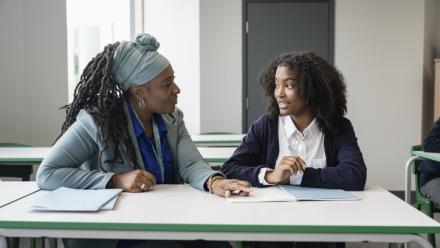Latest Blog Posts
Blog: Shanahan on Literacy
Do Middle and High School Students Need Fluency Instruction and What Counts as Instruction?
Blog: Shanahan on Literacy
Does the Science of Reading Include Middle School?
Blog: Shanahan on Literacy
Monitoring the Reading Comprehension of Older Students
Blog: Shanahan on Literacy
What Does It Take to Teach Inferencing?
Blog: Shanahan on Literacy
I’m a High School Reading Resource Teacher. What Should I Do?
Blog: Shanahan on Literacy
My Middle School Requires Fluency Instruction: Help!
Blog: Shanahan on Literacy
Does text structure instruction improve reading comprehension?
Blog: Shanahan on Literacy
Does Close Reading Reject the Science of Reading?
Blog: Shanahan on Literacy
Does Your Comprehension Strategy Instruction Have this Key Element?
Blog: Shanahan on Literacy
Why We Need to Teach Sentence Comprehension
Blog: Shanahan on Literacy
How to Improve Text Fluency in the Middle Schools and High Schools
Blog: Shanahan on Literacy
Cool New Study on Text Difficulty and Adolescent Literacy
Blog: Shanahan on Literacy
Is Building Knowledge the Best Way to Increase Literacy Achievement?
Blog: Shanahan on Literacy
My Two-Handed Opinion on Teaching with Novels
Blog: Shanahan on Literacy
What Do You Think of Guided Reading for Secondary School?
Blog: Shanahan on Literacy
Should We Read to High School Students?
Blog: Shanahan on Literacy
Does Homework Improve Reading Achievement?
Blog: Shanahan on Literacy
Round Robin by Any Other Name … Oral Reading for Older Readers
Blog: Shanahan on Literacy
Scaffolding the Reading of Seventh-Grade English Learners: How Much is too Much?
Blog: Shanahan on Literacy
Pre-reading and ELLs: Let’s Take off the Training Wheels
Blog: Shanahan on Literacy
Disciplinary Literacy: The Basics
Blog: Shanahan on Literacy
Should We Stop Using Guided Reading Because of Common Core?
Blog: Shanahan on Literacy
Think-Pair-Share in Reading Instruction: Is It Effective?
Blog: Shanahan on Literacy
Writing as a Response to Reading
Blog: Shanahan on Literacy
Culturally Responsive Literacy Instruction
Blog: Shanahan on Literacy
On Progress Monitoring, Maze Tests, and Reading Comprehension Assessment
Blog: Shanahan on Literacy
Vocabulary Teaching
Blog: Shanahan on Literacy
A Disciplinary Literacy Bibliography
Blog: Shanahan on Literacy
Middle School Interventions
Blog: Shanahan on Literacy
Carol Jago on Literature or Not Literature
Blog: Shanahan on Literacy
Common Core Standards versus Guided Reading, Part III
Blog: Shanahan on Literacy
Marilyn Adams on Text Complexity
Blog: Shanahan on Literacy








